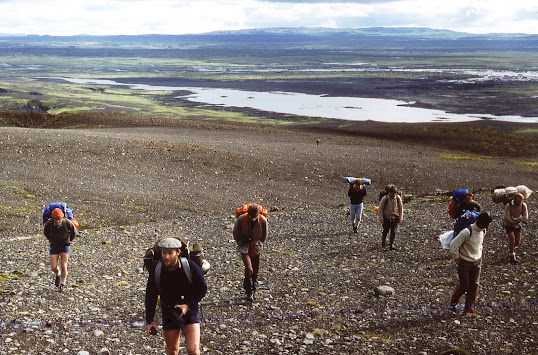Back In Time For The Weekend Episode 3
(first posted 18th February 2016)
Watching Giles Coren savour a pint of home brew in Episode Three of Back In Time For The Weekend brought it all back. I think it was down to the
slightly cloudy, pale, urine-like appearance (the home brew, that is, not Giles), which looked so authentic I could actually taste the stuff. Boots Home Brew Bitter: it had a kind of thin, floral, and, well, bitter flavour.
We used to brew plastic dusbins full in our shared house in Leeds. One housemate, Nick, would urge us to make it as strong as
possible in his own inimitable way:
“Get some f---ing sugar in. It doesn’t matter what it tastes like as long as it gets you pissed.”
Here are two views of our front room in 1974 with the red plastic dustbin
fermenting away in the left hand corner, filling the house with a
farm-yardy, malty, yeasty smell. There are empty
bottles underneath the television and fag packets on the mantelpiece. That dimple pub-glass on the chair
arm is mine, just like Giles Coren’s. I’ve still got it. It’s
indestructible.
Most of the time we bought the Brown Ale kit. The darker the brew
the more drinkable it was. Bitter was fairly nasty. Lager was beyond
disgusting. Brown Ale was passable. Stout had a roasted
dandelion and burdock flavour.
Going by the numbers of empty bottles, it looks like we were
fast running out and desperate for the dustbin to get a move on. Just a
small number, the ones with red plastic push-on tops to the
left of the hearth, remain to be consumed.
We used to sterilise and rinse the bin, dissolve the malt extract and
add sugar and yeast to make the ‘wort’, check the specific gravity with a
hydrometer and then leave it to brew. It was ready when the
specific gravity fell to below 1008. It then went into sterilised
bottles (we had a large collection waiting to be sterilised) which were
sealed with the red push-on plastic tops, taken down to the cellar to
finish off, and stood in three groups: mine, Nick’s and Brendan’s.
There were usually around thirteen bottles each. As fermentation came to
an end, the pressure in the bottles slowly increased so that sometimes
the tops would blow off to discharge the contents all over the cellar
wall and floor. If this happened to one of your own bottles you could
try to swap it for someone else’s, but the sticky mess left behind tended to give you away. In
any case, Brendan put a stop to this practice by marking his bottles
with secret symbols.
You were supposed to leave them in the cellar for at least a couple of
weeks to clear and mature, preferable longer, but Nick and Brendan had
invariably drunk all theirs well before the couple of weeks had passed. They would then, of course, start on mine.
Rarely, if ever, did I get my full share. They thought it hilarious that I believed holding out for two or three weeks would make
it taste better.
There was always a layer of sediment at the bottom of the bottles. It
was almost impossible to pour undisturbed: hence the cloudiness.
Brendan didn’t care. He just used to drink the sediment as well. He didn’t want to waste it. His party piece was to open a bottle, put his thumb over the top to seal it, and shake it up. He would then put both the neck of the bottle and his thumb in his mouth and release the pressure. I swear you could see the back of his head balloon out like in a Tom and Jerry cartoon.
Although the brown ale kit was best, it never came close to the real
thing. If you like cocktails, I can thoroughly recommend a bite of Cadburys chocolate flake mixed in the
mouth with a swig of Newcastle Brown.










